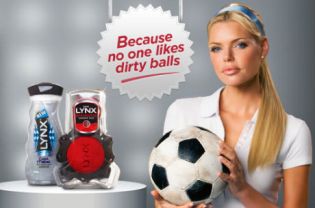The rise of the Internet has brought with it a mammoth network of advertising potential. With the ease of uploading, relatively smaller financial cost and a huge prospective audience, online commercials are rapidly pushing print advertising to the brink of extinction. Somewhere since the inception of online campaigning, the phenomenon of ‘hoax advertising’ has pushed its way to the surface. The idea of hoax advertising centres on the idea of creating a campaign that mocks the brand image at which it is pretending to promote. In the majority, the creators of the hoax harbor some political or social grudge against a company, and seek to convey such flaws through the circulation of misleading advertisements.
The latest example of hoax advertising has come at the expense of Shell, through a series of images mocking the company’s ‘Lets Go’ campaign. Environmental activist group Greenpeace hijacked the  campaign, which was initiated by Shell to promote support for the idea of drilling for oil in protected Artic lands, in an effort to do just the opposite. The elaborate hoax consisted of three main stages. The first involved the hosting of a fake Shell party, celebrating the beginning of the artic drilling. The video depicts bystanders being soaked with oil, protruding from a small rig modeling the one used in the Arctic. The second phase of the hoax invited Internet users to enter into an advertising competition, mocking Shell through facetious humour and derogatory captions. The third stage saw the launch of the @ShellsPrepared Twitter account, in what would seem an awkward attempt from Shell to explain an advertising competition gone wrong, adding further credibility to that belief of thousands that the campaign was indeed real.
campaign, which was initiated by Shell to promote support for the idea of drilling for oil in protected Artic lands, in an effort to do just the opposite. The elaborate hoax consisted of three main stages. The first involved the hosting of a fake Shell party, celebrating the beginning of the artic drilling. The video depicts bystanders being soaked with oil, protruding from a small rig modeling the one used in the Arctic. The second phase of the hoax invited Internet users to enter into an advertising competition, mocking Shell through facetious humour and derogatory captions. The third stage saw the launch of the @ShellsPrepared Twitter account, in what would seem an awkward attempt from Shell to explain an advertising competition gone wrong, adding further credibility to that belief of thousands that the campaign was indeed real.
The final stage of the hoax can be blamed for its success, pushing its status from popular to viral. The clumsy Twitter account made quiet pleas to its followers to understand that the campaign had simply ‘gone wrong’, and to move past the mistakes of the Shell PR team. Just as the Greenpeace team had envisioned, the tweets launched the campaign onto a different level of success, as debates became more contentious as to the truth behind Shell’s supposed PR fail.
The Shell hoax is an example of just how effective online advertising has the potential to be. With the absence of a million dollar budget, suited up marketing executives and high-end web designers, Greenpeace were able to create a campaign that embarrassed, mocked and exposed Shell in a way that only the Internet could facilitate. The careful collaboration of videos, links and competitions, Greenpeace created a campaign that diminished the traditional boundaries between the marketer and the consumer. Instead, the campaign gorged itself on citizen participation, so much so that the hoax was ultimately successful because of those who submitted captions, forwarded emails and shared links, rather than the Greenpeace minds that concocted the base elements of the campaign.
“It’s that willful suspension of belief. This is why hoaxes often work. We know it’s too good to be true, but we still want it to be…”




